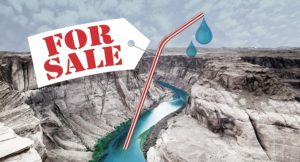I recently had a fascinating discussion about economics with a nephew, which was perhaps more enlightening for me than for him. He just became a teenager, so it is understandable that he hasn’t given a lot of thought to various economic systems, especially those with names that begin with macro, micro, pseudo, or quasi. But I certainly learned what public schools are teaching about the American free enterprise system and why it doesn’t work. In short, everything costs too much, and teachers don’t get paid enough. The government needs to fix both.
We talked about how value is determined in a free market, namely, how much someone is willing to pay for goods or services – willing seller, willing buyer. More than any other factor, that determines the price of food, clothing, shelter, pencils, and even teachers’ salaries. But it was thought-provoking for me, because it reminded me about some things whose value cannot be determined that way, or at least shouldn’t be.
The first example that comes to mind is water. Within local communities, of course, we do put a price on water, based on how many gallons individual households use each month. But on a statewide basis, and especially between states, we do not buy and sell water on the open market, nor can Colorado ever afford to do so. Water is carefully allocated between states based on delicate legal agreements that have survived for decades, making prosperity possible in Colorado.Consider a comparison of three major water providers who rely on water from the Colorado River Basin. The City of Grand Junction’s Utilities Department spends about $11 million a year delivering water to 25,000 people. The Denver Water Department has an annual budget of around $450 million, and serves 1.4 million customers. The Metropolitan Water District of Southern California has an annual budget close to $2 billion and serves 19 million people.
All three regions face periodic water shortages, and all are constantly looking for better ways to deliver more water to thirsty and growing populations. So are Phoenix, Las Vegas, and dozens of others in seven states. There is no limit to the amount of money available to buy water, were it simply for sale on the open market.
In fact, the entire State of Colorado has an annual Gross Domestic Product (GDP) of less than $300 billion, only the 18th largest state (economically) in the country. California, on the other hand, with an annual GDP of $2.7 trillion, is the fifth largest economy in the world – compared to other countries, not states. How much would Colorado’s share of the Colorado River be worth, if it were for sale?
This is not just idle speculation. There have been numerous proposals over the years for various forms of “water marketing.” One plan in the early 1990s would have built a giant reservoir on Roan Creek to store water for sale to California. A few investors would have become fabulously wealthy, but at the expense of any further water use in Colorado’s future.
It is often said that “water will flow uphill toward money.” Obviously human engineering makes it possible to deliver water outside its natural basin. That does not make it a good idea.
Some people think free markets solve water shortages, but they merely transfer the shortage to the area with the least money. The most current example is in Australia, where a decade-old water marketing system has led to a national scandal (ironically referred to by the media as “Watergate”). That’s because big money from elsewhere has completely dried up the Barwon-Darling River Basin, with disastrous consequences for fish, wildlife, agriculture, and communities. There has been large-scale corruption and market manipulation, all of which was predictable. Australia thought a cap-and-trade system for water might create incentives for efficiency, but investment seeks profit, not efficiency. Today, just four individual users control 75% of the water in that basin. Nationwide, 14% of Australia’s water licenses are now owned by investors, including a Cayman Islands group paying record prices, not by actual water users.
Ironically, California, Nevada and Arizona are now considering a water-trading plan based on that Australian system. They are either oblivious to the rural and environmental disaster it caused, or more likely, they don’t really care about rural areas.
Coloradans should keep uppermost in mind one simple truth: If water is for sale to the highest bidder, there will be no water for the Western Slope. That’s why Colorado’s water is not for sale – at any price.
This column appeared in the Grand Junction Daily Sentinel September 13, 2019.





Comments on this entry are closed.